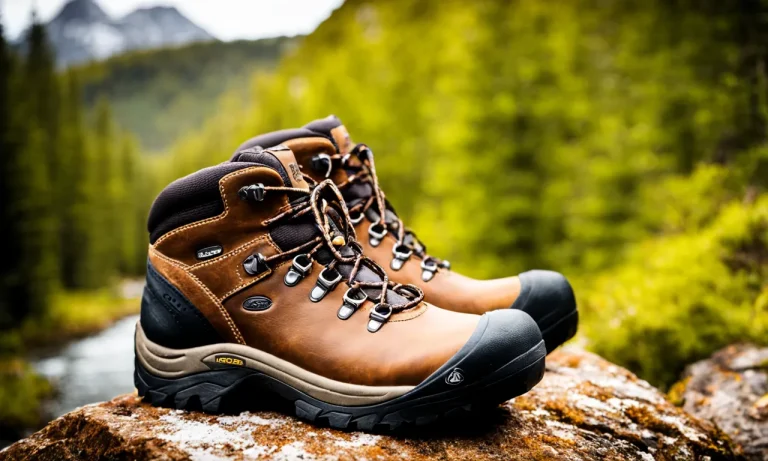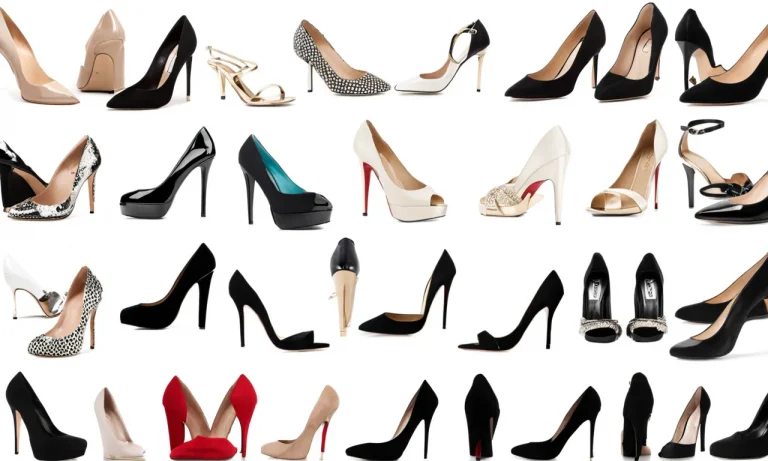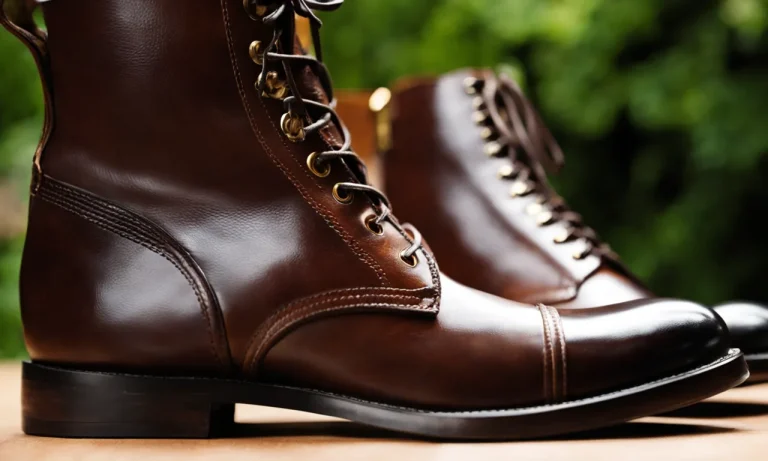Shoe shopping can be frustrating when you have unusually large or small feet. Have you ever wondered if your shoe size correlates to your height? Many tall people assume they need a larger shoe size, while shorter folks resign themselves to small sizes. But is this always the case?
If you’re short on time, here’s a quick answer to your question: research shows there is a correlation between shoe size and height, but many individual factors also impact shoe size. Height does not perfectly predict shoe size.
In this article, we’ll explore the average relationship between height and shoe size for both men and women. We’ll discuss exceptions to the correlation and other factors that influence shoe size, like gender, ethnicity, and foot width. We’ll also provide shoe shopping tips for people of all heights.
Average Correlation Between Height and Shoe Size
Many people wonder if there is a correlation between height and shoe size. While it is true that taller individuals tend to have larger feet, the relationship between height and shoe size is not always straightforward.
Let’s explore the average correlations between height and shoe size for both men and women.
Men’s Height and Shoe Size
When it comes to men, there is generally a positive correlation between height and shoe size. Taller men tend to have larger feet, but this correlation is not absolute. Factors such as genetics, body composition, and individual differences can influence shoe size, regardless of height.
However, on average, taller men will have slightly larger shoe sizes compared to shorter men.
According to a study conducted by the National Center for Biotechnology Information, the average shoe size for men in the United States is around 10.5, with a standard deviation of approximately 1.5. This means that most men fall within the range of 9 to 12 in shoe size.
However, it is important to note that this data is based on averages and individual shoe sizes can vary significantly.
Women’s Height and Shoe Size
For women, the correlation between height and shoe size is not as strong as it is for men. While taller women may have slightly larger feet, there is more variation in shoe size among women of different heights.
Other factors such as body shape, weight distribution, and foot structure can also influence shoe size.
A study published in the Journal of Foot and Ankle Research found that the average shoe size for women in the United States is around 8.5, with a standard deviation of approximately 1.5. This means that most women fall within the range of 7 to 10 in shoe size.
However, just like with men, individual shoe sizes can vary significantly.
Other Factors That Influence Shoe Size
Gender Differences in Foot Size
When it comes to shoe size, there are notable differences between males and females. Generally, men tend to have larger feet than women. This can be attributed to a variety of biological factors, including hormonal differences and skeletal structure.
Men’s feet are typically wider and longer, requiring them to wear larger shoe sizes. However, it’s important to note that these are general trends, and individual variations exist. There are women with larger feet and men with smaller feet.
Racial and Ethnic Variations in Foot Size
Foot size can also vary across different racial and ethnic groups. Research has shown that people of African, Asian, and European descent have distinct foot size characteristics. For example, individuals of African descent often have longer toes and a higher arch, which can impact their shoe size requirements.
Similarly, Asians tend to have narrower feet compared to people of European descent. These variations can be attributed to genetic and environmental factors, such as climate and footwear preferences.
Foot Width
Shoe size is not solely determined by foot length; foot width also plays a significant role. Some people have wider feet compared to others, which can affect the shoe size they need to wear. It is essential to consider both length and width when selecting footwear to ensure proper fit and comfort.
Width variations can be influenced by genetics, weight, and foot conditions such as bunions or flat feet. Taking these factors into account can help individuals find the right shoe size for their feet.
Understanding the various factors that influence shoe size is crucial for finding comfortable and well-fitting footwear. By considering gender differences, racial and ethnic variations, and foot width, individuals can make informed decisions when purchasing shoes.
It’s always recommended to try on shoes and consult with professionals at shoe stores to ensure the best fit for your feet.
Exceptions to the General Correlation
While there is typically a correlation between shoe size and height, there are exceptions to this general rule. Understanding these exceptions can help to explain why some individuals may have different foot sizes compared to their height.
Individual Variation in Foot Size
One of the main reasons for the exceptions to the correlation between shoe size and height is the individual variation in foot size. Just like any other body part, foot size can vary greatly from person to person.
Some individuals may have smaller feet compared to their height, while others may have larger feet. This variation can be influenced by factors such as genetics, body type, and overall body composition.
Additionally, factors such as age and gender can also play a role in foot size. For example, children’s feet tend to be smaller in proportion to their height, while adult feet may be larger. Similarly, men generally have larger feet compared to women.
These variations in foot size can affect the correlation between shoe size and height.
Disproportionate Body Proportions
Another reason for the exceptions to the correlation between shoe size and height is disproportionate body proportions. While height and foot size are generally correlated, it is possible for individuals to have disproportionate body proportions.
This means that their foot size may not necessarily align with their height.
For example, someone may have a relatively shorter stature but larger feet, or vice versa. These disproportionate body proportions can be influenced by factors such as bone structure, muscle mass, and overall body composition.
Therefore, it is important to consider the overall body proportions when assessing the correlation between shoe size and height.
It is worth mentioning that these exceptions do not negate the general correlation between shoe size and height. In most cases, there is a positive relationship between the two. However, understanding the exceptions can help explain why some individuals deviate from this correlation.
For more information on this topic, you can visit www.ncbi.nlm.nih.gov for a comprehensive study on the correlation between shoe size and height.
Tips for Finding the Right Shoe Size
Be Professionally Fitted for Shoes
One of the best ways to find the right shoe size is to get professionally fitted at a shoe store. They have trained staff who can measure your feet accurately and recommend the appropriate size. This is especially important if you have never been fitted before or if you have experienced foot problems in the past.
Professional fitting ensures that you get the right length and width for your feet, providing you with optimal comfort and support.
Try Shoes in Multiple Sizes
When shopping for shoes, it is essential to try them on in multiple sizes. Sizes can vary between brands and even within the same brand, so don’t rely solely on the number printed on the shoe. Different styles and designs may also fit differently, so trying on a few sizes will help you find the best fit.
Don’t be afraid to go up or down a size if necessary, as finding the right fit is more important than sticking to a specific number.
Focus on Fit, Not Size
Remember that the purpose of finding the right shoe size is to ensure a proper fit. The size is just a reference point, but it doesn’t guarantee a comfortable fit. Pay attention to how the shoes feel on your feet.
They should provide enough room in the toe box, proper arch support, and a secure heel fit. If you experience any discomfort or pain, consider trying a different size or style. Your feet deserve to feel great in the shoes you wear!
Consider Width as Well as Length
When finding the right shoe size, don’t forget to consider width as well. Feet come in different widths, and wearing shoes that are too narrow or too wide can cause discomfort and foot problems. Many shoe brands offer different width options, so be sure to try on shoes in various widths to find the best fit for your feet.
A shoe that fits well in both length and width will provide the utmost comfort and support.
Remember, finding the right shoe size is about finding the perfect fit for your feet. Follow these tips and don’t be afraid to seek professional help to ensure your feet are properly supported. Happy shoe shopping!
Conclusion
While height and shoe size are correlated on average, many individual factors influence finding your ideal shoe size. Don’t make assumptions based only on your height. Focus on fit and comfort when shoe shopping to find the perfect pair of shoes for your feet.






